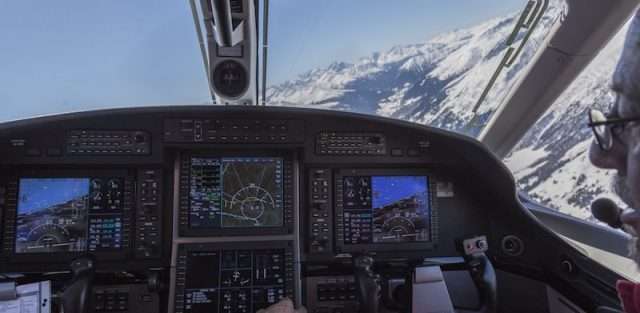Instrument Landing System (ILS)

The Inner Workings of an Instrument Landing System
Using a combination of radio signals and high-intensity lighting arrays, the ILS can guide a small, large, or midsize jet through a safe landing. The ILS receivers located in the aircraft guide an aircraft coming in for a landing. At this time, the receivers perform modulation depth comparisons. If a pilot chooses to do so, they can route the signals into the autopilot. This will allow the aircraft to land automatically. An ILS consists of two sub-systems. Each sub-system performs a different task. The localizer provides the aircraft with lateral guidance, and the glide slope assists with vertical guidance.ILS Limitations
Since the two sub-systems are very complex, some limitations exist. The localizer system is sensitive to obstacles in the signal broadcast area. Buildings and hangars can limit the actions of the localizer. Glide slope systems can also be effected by the terrain around the antennas.An instrument landing system (ILS) assists pilots to land their midsize jet if the runway is not properly visible due to poor weather conditions. The instrument landing system operates using transmitted radio signals. It also provides the aircraft with vertical and horizontal guidance, and, at certain points, the system will indicate the distance between the aircraft and the runway.
The Inner Workings of an Instrument Landing System
Using a combination of radio signals and high-intensity lighting arrays, the ILS can guide a small, large, or midsize jet through a safe landing. The ILS receivers located in the aircraft guide an aircraft coming in for a landing. At this time, the receivers perform modulation depth comparisons. If a pilot chooses to do so, they can route the signals into the autopilot. This will allow the aircraft to land automatically.
An ILS consists of two sub-systems. Each sub-system performs a different task. The localizer provides the aircraft with lateral guidance, and the glide slope assists with vertical guidance.
ILS Limitations
Since the two sub-systems are very complex, some limitations exist. The localizer system is sensitive to obstacles in the signal broadcast area. Buildings and hangars can limit the actions of the localizer. Glide slope systems can also be effected by the terrain around the antennas.








